
Over the past few months, I have argued feverishly that housing markets with responsive land supply are both more affordable and less prone to bubbles/busts than markets where land supply is constrained by physical and/or regulatory barriers.
In many of these articles, I have used Texas as an example of a housing market largely free of supply constraints, where home prices have remained both affordable and stable, despite both high population growth and similar, albeit slightly more regulated, credit conditions as other US states.
In the comments threads of these articles, a number of commentors have argued that the responsive supply argument is invalid because Texas experienced a major housing bubble in the early 1980s.
For example, in the comments thread of my recent article, US housing: what happened to the underlying demand?, fellow blogger Cameron Murray said the following about Houston, Texas:
The other evidence to add is that Houston, the poster child of free land markets, suffered a massive bubble in the 1980s and was still recovering from it when that latest national bubble popped.
That suggests that free land markets do not have the price impacts you are suggesting.
Cam and others have made similar claims before in order to discredit the responsive supply argument. To them, the supply-side of the housing market is irrelevant and has little impact on home prices.
It’s time to set the record straight. Did Texas experience a housing bubble? Or did Texas’ flexible land/housing supply assist in ameliorating swings in demand, thereby ensuring prices remained both affordable and relatively stable?
Before answering these questions, we need to define what constitutes a housing bubble? While there are lots of definitions, I define a housing bubble as a situation where home prices grow far beyond the fundamentals that support them, such as incomes and rents. In my opinion, any discussion of the relative value of housing is meaningless without referencing one of these metrics. Otherwise, we revert to anecdotes, second-hand stories, and down right spruiking, none of which proves anything.
So how does Texas stack-up? While I don’t have any information on rents, Harvard University and Demographia have published Median Multiples – defined as the median house price divided by median household income – for all of the US cities.
The below chart plots the Median Multiple for Texas’ major cities against those of California – a state known for its restrictive land-use regulations and physical land constraints (e.g the sea and mountains).
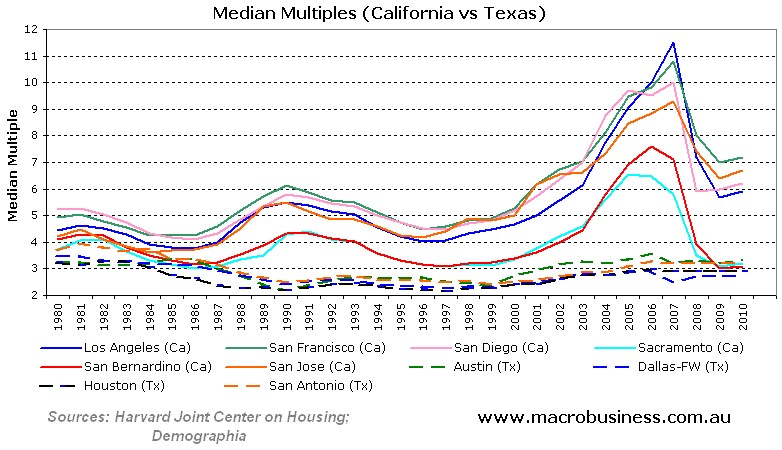
As you can see, during the so-called “massive bubble in the 1980s”, Texas’ Median Multiples remained between 3.0 and 4.0 times, and were also well below those of California throughout most of this period.
To illustrate Texas’ relative affordability and price stability more clearly, consider the below chart showing the highest, lowest and average Median Multiples over the past 30 years.
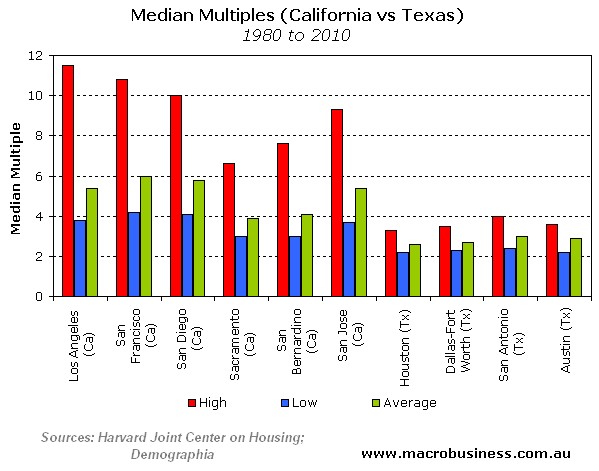
It is clear from the above data that Texas’ home prices have been both far more affordable and less volatile than California’s over the past 30 years, consistent with a housing market where land/housing supply is highly responsive. It is also difficult to argue that Texas’ housing market in the 1980s was a “massive bubble” when homes remained relatively affordable throughout the entire period.
What makes Texas’ home price performance in the early 1980s particularly impressive is that prices managed to remain relatively stable in the face of significant demand-side influences that should have caused home prices to rise significantly and then crash.
First, oil prices spiked in the late 1970s/early 1980s before plummeting (see below chart). The surge of oil revenues initially acted as a massive positive income shock, helping to lower unemployment to around 4.5% in 1980. But once the oil price cratered, incomes dropped and unemployment spiked to around 8.5% in 1984 (click to view chart).
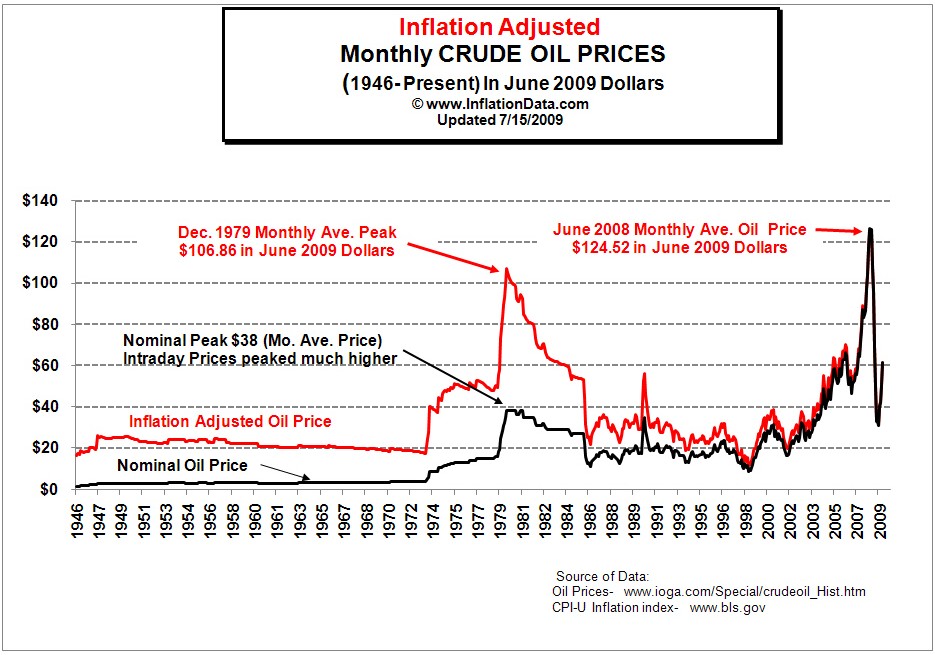
Second, Congressional liberalisation of loan standards in 1979, which led to the infamous savings and loan crisis, caused a surge of profligate housing lending in Texas as well as some other states (e.g. Arizona).
Finally, during the Texas oil boom, the state’s population growth accelerated. From 1970 to 1980, as oil prices spiraled upward and people flocked to Texas, its population grew by 2.71% per year, while the nation’s increased at a 1.14% pace.
Put simply, the responsiveness of Texas’ land/housing market helped to ameliorate the wild swings in housing demand, thereby ensuring home prices remained both relatively stable and affordable. The same cannot be said for supply-restricted California.
And Texas’ flexible supply has also helped it to avoid the 2000s housing bubble/bust, as evident by the below Dallas Federal Reserve charts.
First, consider the stability of Texas’ home price indices versus the nation’s.
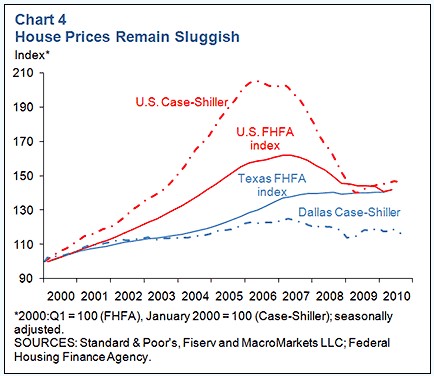
Second, consider the quarterly change in Texan home values versus the key bubble states of California, Florida and Nevada, as well as the nation as a whole.
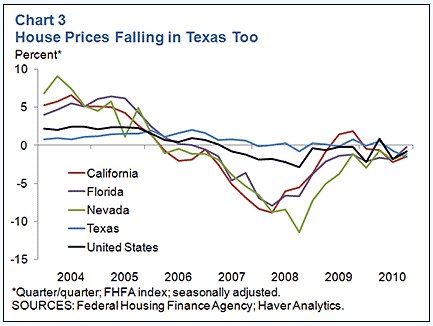
The key point to take away from this analysis is that the supply-side of the housing market matters. Whilst commentators can debate whether the demand-side influences are more important or not, to simply dismiss the supply-side altogether as not being important is about as useful as eating Chinese food with only one chopstick.
By all means, let’s crack down on the destructive speculation and easy credit that has fuelled the world’s housing bubbles. At the same time, let’s work to free-up the supply-side barriers that have enabled the credit-fuelled demand to feed into skyrocketing house prices and volatile boom/bust conditions. Only then will we achieve stable and affordable housing markets.
Cheers Leith

